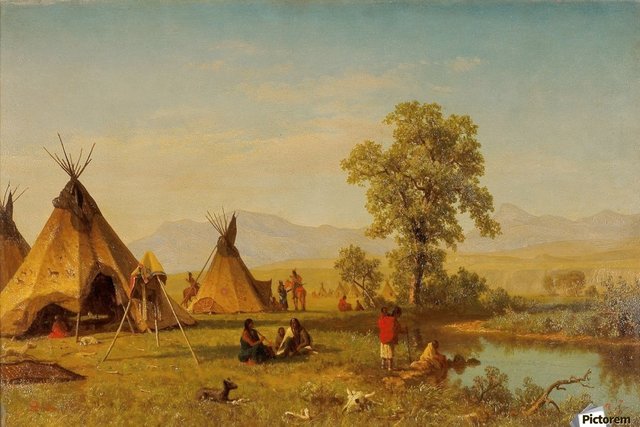The Mutual Influences of Tribesmen Towards Indian Peasants

Image Source
Tribal cultivation is naturally a transforming undertaking. A restricted territory is burned out, or the bramble slashed down and burnt. Some seed are scattered. Occasionally, the seeds are placed in gaps made by a pointed digging-stick. The richness of the soil is quickly depleted. Following two years at most, new plots must be cleared and the old fallowed to develop new shrubs and trees for six to ten years.
This sort of food production is actually practiced by most tribes across the nation, Gavada on the west drift, Ho, Oraon, Santal, Kolta. The land can't bolster the same number of people as with normal agriculture, however then furrow culture requests more work, leveling the ground, terracing the slope, evacuation of stones, clearing of backwoods and stumps, the customary utilization of excrement for compost. All this implies the responsibility for beasts and implements.
It often implies singular responsibility for by division into settled plots, which eventually prompts class contrasts when the population expands inferable from the better food supply. All things considered, even in many cultivating towns, the peasant likewise supplements his furrow culture with primitive slash-and-burn strategies. These are naturally confined to the town wastelands, usually high up on the slope, where terracing isn't conceivable in view of the hard basalt under bed and the precarious slant.
The seed-beds of rice are additionally arranged by a technique that unmistakably gets from the slash-and-burn cultivation. In these beds are put leaves from the woods, with excrement, soil, and debris. The cake is allowed to dry till the leaves will burn, hosed with the goal that it won't burn too quick, and after that touched off. It smolders, the chemicals required for the young seedlings are heated into the soil. The rice seeds are planted on this readied bed in the first rain. At the point when the transplantation happens these beds are left unfilled.

Image Source
On that small plot of land the peasant at that point plants the vegetables, since without, rice can't outfit them an adjusted diet. This technique drove naturally to the discovery of crop rotation, so fundamental to effective agriculture. A portion of the planting is as yet done by some Indian peasants and numerous tribesmen on the slopes, with the thomba digging-sticks.
This contrasts from the prehistoric in that no stone ring now burdens the digging-stick. The modern stick is chest-high set up of the primitive ell-long tool, in this way heavier and thicker, with a steel end, however the primitive origins of the thomba are unmistakable. The seeds planted are of the most reduced nature of staples, for example, nachani, vari, samva, which are now and again discovered wild.
No furrowing is vital or even conceivable on the lofty slopes where this technique is utilized, however such cultivation requires extensive fallowing for around eight months, often years. On small however level plots the cultivator or since a long time ago dealt with pick is utilized as a part of place of the furrow. Where the soil is poor the cultivation is finished by women to supplement the men's heavier agriculture. In the most primitive tribes the utilization of the digging-stick and hoc, for example, all agriculture, is an imposing business model of the women, as chasing is of the men.

Image Source
The fishermen have now turned into an arrangement of specific castes. In any case, tribesmen and numerous peasants fish without nets, driving the fish into shallows or towards specially built brush dams and scooping them up with uncovered hands. Correspondingly for pottery, however archaic exploration demonstrates fantastic pottery made on the quick wheel as long as five thousand years prior in the Indus district, prehistoric paleontology in the Deccan likewise indicates cruder pottery made without the wheel.
Such pots of all sizes are being made today, by the very same strategies, on the slow turning plate or with no circle at all. The surprising component is that this present potter's plate is to be dealt with just by the women. The men finish die harsh pot by paddling it down, with a wooden oar utilized on the outside while a clench hand sized stone called blacksmith's iron is held in the other hand inside the pot. The sides would thus be able to be made thinner and firmer before heating and the pot looks much better a while later as respects finish and shape.
The blacksmith's irons are found in a digging of strata two to three thousand years old. Potterymaking more likely than not been the sole right of the women, however the quick potter's wheel is and evidently dependably has been a men's device.

Image Source

References:
http://www.historydiscussion.net/british-india/expansion-and-commercialization-of-agriculture-during-the-british-rule-in-india/640
https://en.wikipedia.org/wiki/Tribe_(Native_American)
Wow so much revealing than i think, beautiful write up here thank you
Downvoting a post can decrease pending rewards and make it less visible. Common reasons:
Submit
new plots must be cleared and the old fallowed to develop new shrubs and trees for six to ten years. All agriculture, is an imposing business model of the women, as chasing is of the men.
Downvoting a post can decrease pending rewards and make it less visible. Common reasons:
Submit
Congratulations @juvyjabian, this post is the ninth most rewarded post (based on pending payouts) in the last 12 hours written by a Superuser account holder (accounts that hold between 1 and 10 Mega Vests). The total number of posts by Superuser account holders during this period was 567 and the total pending payments to posts in this category was $2830.75. To see the full list of highest paid posts across all accounts categories, click here.
If you do not wish to receive these messages in future, please reply stop to this comment.
Downvoting a post can decrease pending rewards and make it less visible. Common reasons:
Submit